What is the best selection method?
Selection methods for multiple traits aim to find the balance to increase the population means for multiple traits.
These simulation reports demonstrate the differences between classical methods such independent culling and selection indices, to support the practical implementation of indices.
Contact: g.covarrubias@cgiar.org
Web link
Cassava (IITA-NextGen Cassava): To scale or not to scale
It is recommended instead to use Smith-Hazel weights, or apply BLUPs directly to economic weights.
Web link
Beans in East Africa (CIAT): Increasing accuracy
It is not recommended to alter the current base index selection scheme.
Web link
Potato (CIP) selection schemes
Considers optimizing program size, running multiple cohorts, earlier recycling, selection indices and genomic selection.
Web link
Cassava in West Africa (IITA): optimal selection strategy
The Smith-Hazel index is beneficial where the accuracy of breeding value estimation is low, but adds little to genetic gain where it is high.
Presentation
Maize (CIMMYT): selection indices.
It is recommended to adopt an index immediately and refine later.
Presentation
Rice (IRRI): selection indices.
Selection indices can improve genetic gain across all regions.

